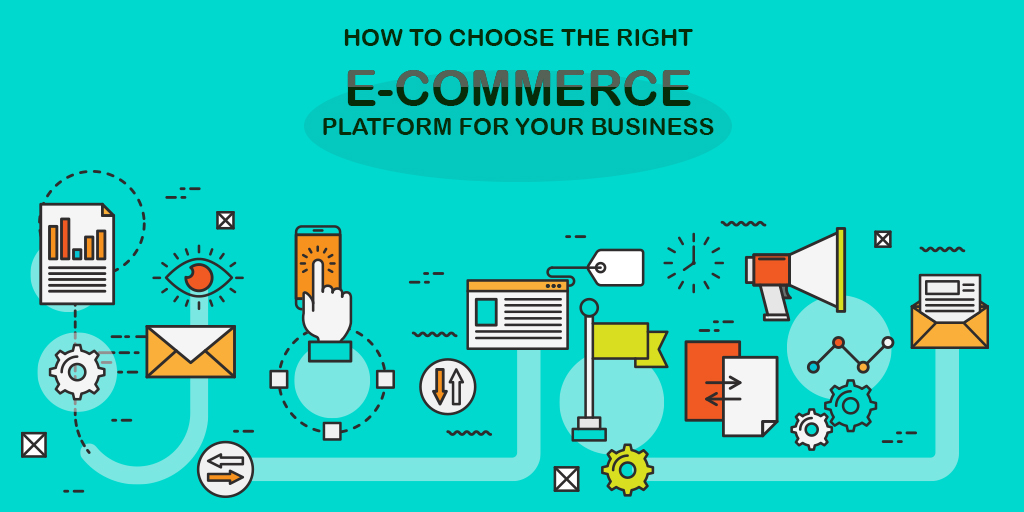
Are you curious about the inner workings of your favorite online stores? Do you ever wonder what platform they’re using to power their ecommerce operations? Well, you’re in luck! In today’s digital age, where countless websites are vying for your attention and business, it’s essential to know how to determine which ecommerce platform a site is using. Whether you’re an aspiring entrepreneur looking for inspiration or just a curious shopper with a knack for technology, this article will guide you through the process of uncovering the secrets behind these virtual storefronts. So grab your detective hat and get ready to unveil the mystery of ecommerce platforms!

Knowing a site’s platform is important for several reasons. It allows you to understand the capabilities and limitations of the ecommerce website you are visiting. Different platforms offer different features, functionalities, and customization options. By identifying the platform, you can gain insights into how the site may function and whether it meets your needs as a consumer or business owner.
Knowing the platform can help you assess the security and reliability of the website. Some ecommerce platforms have stronger security measures in place than others. By being aware of which platform a site is using, you can evaluate its trustworthiness and make informed decisions about sharing personal information or making purchases.
Understanding the platform can be beneficial if you are an entrepreneur or online store owner yourself. It provides valuable market research by allowing you to see what platforms competitors are using and how they implement certain features or designs.
Being able to identify a site’s ecommerce platform empowers consumers and businesses alike to make informed choices based on functionality, security, and industry trends without having to rely solely on guesswork!

Determining the eCommerce platform a website is using can be challenging, but there are several methods you can use to make an educated guess or find out for sure:
Keep in mind that some websites may intentionally hide or obfuscate the platform they use for security or competitive reasons. Therefore, it’s not always possible to determine the platform with certainty. However, using a combination of the methods mentioned above can often provide enough information to make an educated guess about the eCommerce platform being used.

When it comes to identifying the ecommerce platform a website is using, understanding the distinctive features of popular platforms can be extremely helpful. Here are some examples of well-known platforms and their standout characteristics:
1. Shopify: One of the most widely used ecommerce platforms, Shopify offers an intuitive user interface and easily customizable themes. It also provides a wide range of built-in marketing tools, making it ideal for small to medium-sized businesses looking for simplicity and convenience.
2. WooCommerce: Built as a plugin for WordPress, WooCommerce seamlessly integrates with this popular content management system. It offers extensive customization options and flexibility in terms of design and functionality. With its vast library of plugins, WooCommerce makes it easy to add additional features or expand your online store.
3. Magento: Known for its scalability and robustness, Magento is often chosen by larger enterprises due to its advanced features such as multi-store capabilities and powerful inventory management systems. Its open-source nature allows for complete customization but may require more technical expertise.
4. BigCommerce: This platform stands out with its all-in-one solution approach that includes hosting, payment gateway integration, SEO tools, and more. BigCommerce focuses on providing enterprise-level solutions while still being accessible to smaller businesses.
5. Shopify Plus: Designed specifically for high-volume merchants or large enterprises seeking comprehensive e-commerce solutions without compromising security or performance levels.
By familiarizing yourself with these distinctive features, you can start recognizing key elements that indicate which platform a website might be using without any conclusive statements.

When trying to determine what ecommerce platform a website is using, there are several tips and tricks that can help you uncover the truth. One of the first things to look for is the design and layout of the site. Different platforms have distinct templates and styles, so take note of any familiar patterns or elements.
Another clue can be found in the URL structure. Some ecommerce platforms will include their name or specific keywords in the URLs, providing a clear indication of which platform they are using. Additionally, pay attention to any obvious branding or logos on the site itself – many platforms will display their logo prominently in order to promote their services.
If you really want to dig deeper, try analyzing the page source code. Look for any references to common CMS (content management system) names such as WordPress, Shopify, Magento, or WooCommerce. These platforms often leave behind telltale signs that can help identify them.
Don’t forget about customer reviews and testimonials. Many people who run online stores will mention which platform they are using in their feedback or comments section. This can provide valuable insights and confirm your suspicions about a particular site’s ecommerce platform.
By keeping these tips in mind and being observant while browsing different websites, you’ll gradually develop an eye for identifying ecommerce platforms with ease!

The choice of platform can significantly impact the company’s online presence, customer experience, scalability, sales intelligence and overall success. Here’s a step-by-step guide on how a company can choose an eCommerce platform:
Choosing the right eCommerce software platform is a critical step in building a successful online business. Take your time, conduct thorough research, and consider seeking the expertise of eCommerce consultants or developers if needed to make an informed decision.

Tools and resources can be incredibly helpful when trying to determine what ecommerce platform a site is using. There are several online tools available that can analyze the coding and structure of a website to provide insights into its underlying platform.
One such tool is BuiltWith, which allows users to enter a website URL and receive detailed information about the technologies used on that site, including the ecommerce platform. It provides data on everything from content management systems to hosting providers, making it easier than ever to identify the platform being used.
Another useful resource is WhatRuns, an extension for Google Chrome that reveals the technologies running behind any website with just a click. It not only identifies the ecommerce platform but also gives information about other plugins and scripts being utilized.
Additionally, examining the source code of a webpage can offer clues about its underlying technology. By right-clicking on a webpage and selecting “View Page Source,” you can dig into the HTML markup to look for specific patterns or hints that may indicate which ecommerce platform is in use.
For those who prefer more hands-on approaches, joining relevant online forums or communities dedicated to ecommerce platforms can provide valuable insights. Engaging with experienced users who have encountered various platforms firsthand can help in identifying subtle differences between them.
By utilizing these tools and resources, individuals can gain greater clarity about which ecommerce platforms power their favorite sites. Whether out of curiosity or for business purposes, understanding what platforms are popular among successful websites can lead to improved decision-making when building one’s own online store.

In today’s digital landscape, identifying the ecommerce platform a site is using can provide valuable insights for businesses and consumers alike. Knowing which platform a site utilizes allows businesses to stay competitive by understanding the features and functionality their competitors are leveraging. For consumers, recognizing the platform can help them make informed decisions about where they choose to shop online.
While determining an ecommerce platform may seem daunting at first, there are several key indicators that can guide you in your quest. By considering factors such as design elements, checkout process, and available integrations, you can start narrowing down the possibilities.
Additionally, various tools and resources are available to assist in identifying a site’s ecommerce platform. From browser extensions to online platforms specifically designed for this purpose, these tools offer quick and efficient solutions for uncovering the underlying technology powering an ecommerce website.
Remember that while it’s important to know what ecommerce platform a site is using, it shouldn’t be the sole factor in your decision-making process as a business or consumer. User experience and satisfaction should take precedence over specific technologies employed.
So next time you come across an impressive online store or want to delve deeper into your competitor’s strategy – take note of those distinctive features we discussed earlier right click them! With some detective work and helpful tools on hand (like browsing extensions), you’ll be well-equipped to determine what ecommerce platform lies behind any given website.


Entrepreneur and full-stack web developer capable of multitasking and completing large-scale projects in a short period of time. Founder of moy-razmer.ru and nomadicsoft.io, large experience in e-commerce and various SaaS projects

Custom eCommerce development starts with your needs. No matter what size your business is, crafting killer websites or robust applications with Nomadic Soft is a winning strategy. Our development team will always use the latest tech tools to build your business interactive and engaging web interfaces and applications.